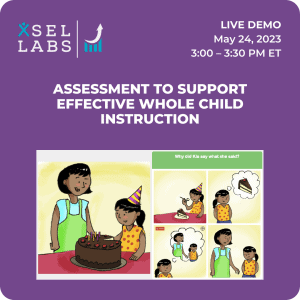A day of school is packed from the opening bell to dismissal. Teachers are expected to cover a great deal of instruction in core subjects such as math, reading, and writing. With these demands, teachers often find it difficult to fit social and emotional learning (SEL) instruction into an already full day. Adding SEL instruction to the mix can feel like “one more thing” added to a long list of things they already lack time to do.
What if the time teachers spend on SEL yields time savings that are greater than the amount of time they spend on SEL?
The Value of 15 Minutes
Many educators who spend time on SEL instruction report calmer, more focused students. For example, one first-grade teacher we worked with reported that before she started spending time on SEL, she typically spent 15 minutes every day settling the class after recess and that most of that time was spent refereeing conflicts that had arisen on the playground. After teaching students problem-solving skills, she estimated that students now took only two minutes to settle into lessons after recess.
Let’s do the math:
- Time spent on post-recess behavior management before teaching SEL = 15 minutes per day.
- The teacher spent 50 minutes per week on SEL instruction.
- She used morning meetings, previously an unfocused time, to teach SEL.
- Using morning meeting time to teach SEL results in no time lost to academic instruction.
- Time spent on post-recess behavior management after teaching SEL = 2 minutes per day.
- Time recovered for academic instruction = 15 – 2 = 13 minutes per day.
- SEL bought 13 minutes per day back for academic instruction.
- There are roughly 180 instructional days in a school year
- 13 minutes saved per day amounts to 39 hours per year saved.
What are 39 hours of additional instructional time? A typical 2nd-grade week is 33 hours long, counting recess and academic instruction. So 39 hours is more than one additional week of instruction. Let’s imagine all that time was spent on literacy. During a typical week, 2nd graders spend an average of 9.9 hours per week on literacy. With 39 instructional hours spent on literacy, that amounts to almost four extra weeks of reading instruction.
Getting started with SEL can be hard. Even when teachers know that the time spent can earn back instructional time, it can be hard to know where to start and how to teach new classroom skills. Investing the time in SEL instruction starts with a leap of faith that the time spent will yield dividends. It may be easier to take this leap secure in the knowledge that many teachers have found that consistent SEL instruction leads to calmer, more engaged students and more time to get down to the important work of learning.



